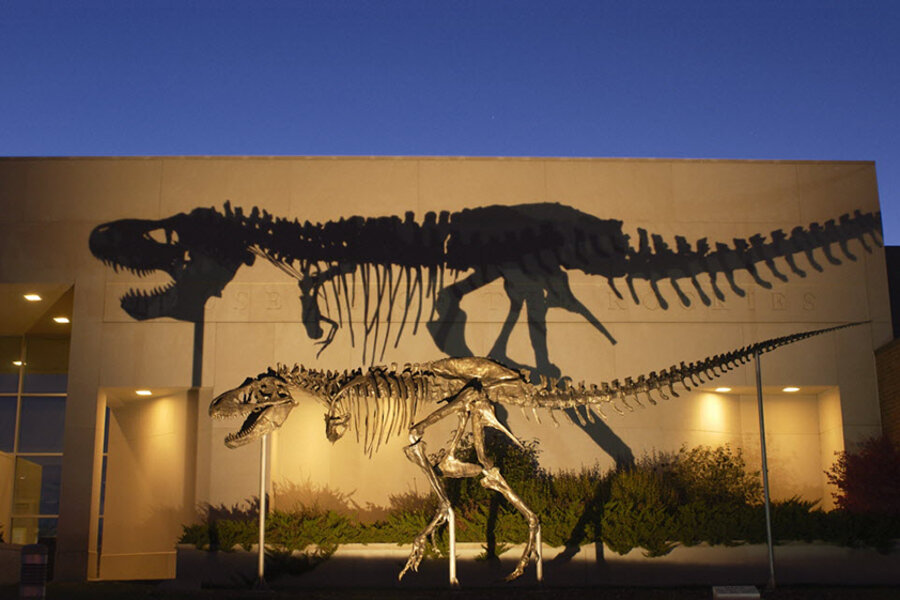Could mysterious 'peak ring' created by dinosaur-killing asteroid have held life?
Loading...
After drilling for weeks off the coast of Mexico, scientists have unearthed rocks from the original crater created when a massive asteroid struck the Earth, wiping out the dinosaurs and many other species.
Scientists believe the impact of the city-sized asteroid, which hit the Earth about 66 million years ago, caused 75 percent of life to go extinct. The impact caused massive wildfires hundreds of miles away, clouded the sky with ash and debris, and triggered an impromptu winter.
But the researchers believe that more life came out of the devastation. By drilling below the surface into an internal “peak ring” of mountains left by the asteroid, they hope to learn more about how organisms recovered and evolved.
“We want to know where the rocks that make up this peak ring come from," Joanna Morgan, a geophysicist at Imperial College London who is leading the expedition, told the BBC in April.
They particularly hope to learn whether the asteroid’s impact on what was then a shallow sea area caused the crater to fill with water that could sustain micro-organisms. They believe it is possible, as similar conditions exist today in the volcanic ridge that spans the center of the Atlantic Ocean, the BBC reports.
Scientists have known about the 125-mile wide crater, known as Chicxulub, since the 1980s, but the expedition is the first effort to discover more about this peak ring. They’ve just reached the top layer this week.
“We went through a remarkable amount of the post-impact world. All the way into the Eocene times – so between 50 and 55 million years ago," Sean Gulick, a geophysicist at the University of Texas at Austin who is co-leading the expedition with Dr. Morgan, told NPR.
“We've got all these limestones and rocks that contain the fossils from the world after the impact, all the things that evolved from the few organisms that survived,” Dr. Gulick tells NPR.
By drilling deep into the Chicxulub crater, near the present-day Yucatan Peninsula, they have discovered one initial clue. Beneath a layer of sandstone is a thick layer of broken melted rock that may be the results of a large tsunami triggered by the asteroid’s impact, NPR reports.
Gulick believes fossils of micro-organisms that survived near the site of the impact could be in these samples. In June, the international team of researchers from the European Consortium for Ocean Research Drilling will send them to a lab in Germany for further testing.
The expedition, which began last month and will last until June, will drill a 1,500-meter hole, excavating both sediment covering the crater and 900 meters into the crater itself, as Morgan said in an interview on WBUR’s Here and Now last month:
“What we think happened to the rocks that form this peak ring is when the asteroid hit the Earth, it pushed it down something like 20 or 30 kilometers, and then rocks in the middle of that big cavity then came up perhaps 30-35 kilometers and then collapsed outward to form this peak ring.”
Discovery of lifeforms that survived the massive asteroid impact buried far beneath the surface could even have implications beyond our own planet, Morgan says.
“This is very interesting for Chicxulub, but it's also fascinating to consider in terms of the early Earth or even Mars,” she told the BBC. “On the early Earth, there would have been many more, larger impacts. We think life may well have originated in impact craters.”





